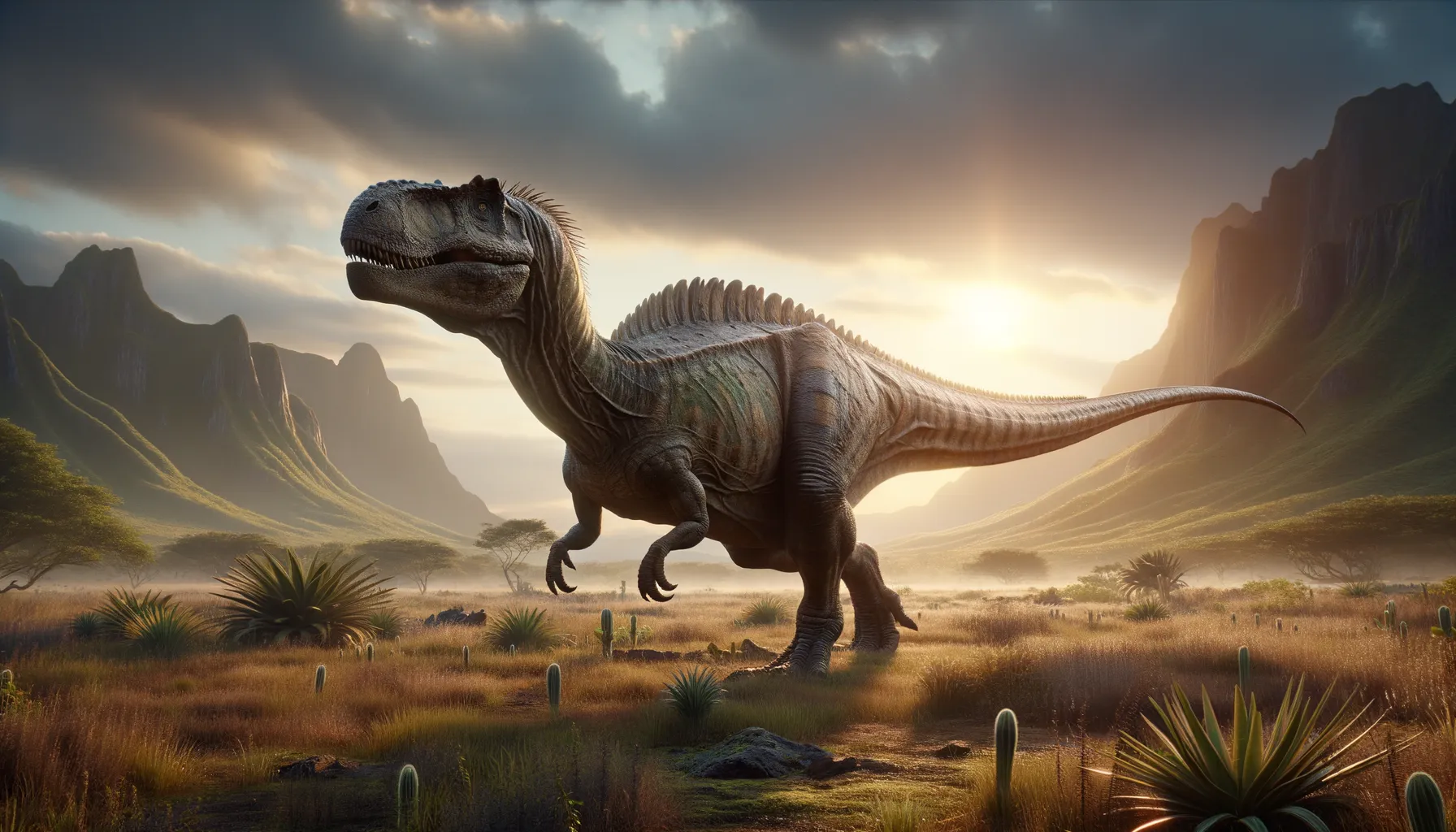
Scelidosaurus
Armored guardian of the Jurassic forests.
Period
Jurassic
Length
Measured around 4 meters in length.
Height
Stood about 1.2 meters tall.
Weight
Weighed roughly 300 kilograms.
Scelidosaurus was a herbivorous dinosaur from the Early Jurassic period, characterized by its sturdy body and armor-like scales. It walked on all fours and was among the first complete dinosaurs discovered, shedding light on dinosaur evolution. Its physical features suggest it was well-adapted to fend off predators while browsing for low-lying vegetation.
Diet
Scelidosaurus primarily fed on plants, making it a dedicated herbivore. Its diet included ferns, cycads, and other low-lying vegetation that it could easily access with its beak-like mouth.
Hunting
Being herbivorous, Scelidosaurus did not hunt but foraged for plants. It relied on its developed beak to clip and consume vegetation, playing an essential role in its ecosystem as a plant eater.
Environmental challenges
Scelidosaurus faced various environmental challenges, including predator threats from larger carnivorous dinosaurs of its time. It also dealt with changes in vegetation and climate that could impact its food sources. Its heavy armor was crucial for defense, providing a deterrent to predators. The fluctuating environments of the Jurassic period required adaptability to survive.
Speed
Scelidosaurus was relatively slow-moving.
Lifespan
Estimated to live around 30-40 years.
First discovery
Discovered in England in the 19th century.
Fun Facts
- Scelidosaurus is one of the earliest complete dinosaur skeletons ever discovered, giving scientists significant insight into the early days of these ancient creatures.
- This dinosaur lived during the Early Jurassic period, around 191 million years ago.
- Scelidosaurus had an armor-plated body with bony plates and spikes running along its back, providing protection from predators.
- It was a herbivore, which means it mostly ate plants, likely low-lying ones since it walked on all fours and had a relatively small head.
- The name 'Scelidosaurus' means 'limb lizard,' referring to its well-developed limbs, which suggest it was a strong walker.
- Fossils of Scelidosaurus have been primarily found in England and were first described by Sir Richard Owen, the same scientist who coined the term 'dinosaur.'
- Scelidosaurus measured about 4 meters (13 feet) in length, similar in size to a small car, making it relatively medium-sized for a dinosaur.
Growth and Development
Scelidosaurus started as a hatchling and grew over several years into a fully armored adult. Its growth involved the development of its characteristic bony plates and spikes, offering protection as it matured. As it grew, it would have gained more experience foraging and recognizing threats in its environment.
Habitat
Scelidosaurus inhabited areas that were lush with vegetation and had access to water sources, such as rivers or streams. It favored forested regions where it could find ample food and cover. The climate during its time was moderately warm, which supported the growth of diverse plant life crucial to its diet.
Interaction with other species
Scelidosaurus likely coexisted with a variety of other dinosaurs and prehistoric creatures. Although not aggressive, it might have needed to assert itself when competing with other herbivores for food. Its armored body helped it stay safe from hostile encounters with predatory species.
Natural lifespan
The natural lifespan of Scelidosaurus was likely around 30 to 40 years.
Reproduction
Scelidosaurus reproduced by laying eggs in nests, similar to other dinosaurs. The eggs were likely cared for in safe, concealed areas to protect them from predators. Young Scelidosaurus would have been relatively vulnerable and dependent on their armored features developing fully after hatching.
Social behaviour
Though its exact social structure is unsure, Scelidosaurus might have traveled in small groups to enhance protection and foraging efficiency. Grouping could provide extra alertness to potential threats, ensuring a better chance for survival against predators.
Fossil locations
Fossils of Scelidosaurus have been primarily found in England. These discoveries have provided significant understanding of its anatomy and lifestyle. Its fossils represent some of the earliest complete dinosaur specimens, assisting paleontologists in studying early dinosaur diversity and adaptation.
